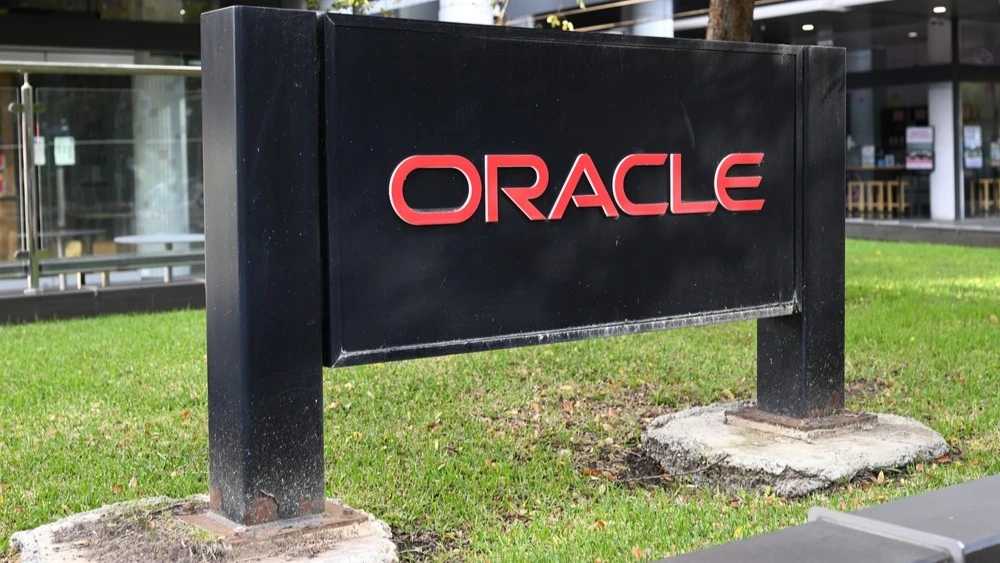Morgan Stanley: Oracle debt risks are at a 3-year high. What does it advise?

Oracle's debt risk index has risen to a three-year high - and Morgan Stanley estimates this is just the beginning. Against the background of growing borrowings to finance AI projects and large-scale construction of data centers, default protection is becoming more expensive, and the pressure on the securities is increasing. What do analysts see and what actions do they suggest investors take?
Details
The debt risk index of cloud giant Oracle reached a three-year high in November, and the situation will only get worse in 2026, according to Morgan Stanley. Its assessment is published by Bloomberg.
A growing funding gap, a balance sheet overburdened with liabilities and the risk of technological obsolescence are just some of the hidden threats Oracle faces, analysts pointed out.
The cost of insuring Oracle's debt against default over a five-year horizon (credit default swaps (CDS) rose to 1.25 percentage points per year on Nov. 25, according to ICE Data Services. The CDS value could soon breach 1.5 percentage points and approach 2 percentage points if the company fails to justify its artificial intelligence investment strategy in detail as the new year approaches, according to Morgan Stanley. Oracle's CDS reached a record 1.98 percentage points in 2008, according to ICE Data Services. Analysts warn that the price of credit default swaps could break that record because of concerns that the company is borrowing too heavily to fund its AI ambitions. This is causing banks and investors to actively hedge risk, Bloomberg writes.
An Oracle spokesperson did not respond to the agency's request for comment.
What's alarming Morgan Stanley
Oracle is among the companies in the race to invest in artificial intelligence. As a result, the data center giant has become a barometer of AI risk in the credit market, Bloomberg writes. In September, the company raised $18 billion in the U.S. high-grade bond market. Then, in early November, a group of about 20 banks arranged an approximately $18 billion project loan to build a data center campus in New Mexico that Oracle will lease.
Banks are also preparing a separate package of loans worth $38 billion to finance the construction of data centers in Texas and Wisconsin, which are being built by Vantage Data Centers and which Oracle plans to lease. According to Morgan Stanley, it is the banks' involvement in these construction projects, linked to the cloud giant as a future tenant, that has likely been one of the key reasons for the surge in trading activity in Oracle's CDS market - and that trend could continue.
"Over the past two months, it has become more apparent that the construction loans mentioned in the press, which are in the process of being processed for sites where Oracle will be a tenant, could be an even stronger driver of hedging both now and going forward," the analysts wrote.
They added that there is a risk: if and when banks reallocate these loans to other participants, some of their hedges may be removed. However, other investors may also begin hedging risks later, and in doing so, construction financing needs will not end with just the Vantage projects and the New Mexico site.
What's with the Oracle paperwork
These concerns are already weighing on Oracle's shares. By November 26, quotes of the company lost 40% from its peak reached in early September. Analysts noted that this may prompt the company to disclose in the upcoming report a detailed financing plan - including information about the joint project with OpenAI to build artificial intelligence infrastructure Stargate, data centers and capital expenditures.
Oracle's credit derivatives perform worse than the broad CDX investment index, and Oracle's corporate bonds lag behind the Bloomberg High Quality Securities Index - amid a surge in hedging demand and deteriorating sentiment, the agency said.
Previously, analysts had recommended that investors buy Oracle bonds and credit default swaps in a so-called basis deal - to capitalize on the expectation that CDS spreads would rise faster than bond spreads. Now they believe a more profitable option would be to simply buy CDS directly.
"Therefore, we are closing the bond purchase portion of the deal and leaving only the buy protection component through CDS. We believe that betting solely on CDS is now more favorable and will result in greater spread movement," they wrote.
Of the 44 analysts following Oracle stock, 30 advise buying it, ten advise holding it and two advise selling it.
This article was AI-translated and verified by a human editor
